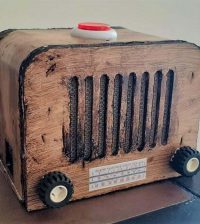- makeITcircular 2024 content launched – Part of Maker Faire Rome 2024Posted 2 weeks ago
- Application For Maker Faire Rome 2024: Deadline June 20thPosted 2 months ago
- Building a 3D Digital Clock with ArduinoPosted 7 months ago
- Creating a controller for Minecraft with realistic body movements using ArduinoPosted 7 months ago
- Snowflake with ArduinoPosted 8 months ago
- Holographic Christmas TreePosted 8 months ago
- Segstick: Build Your Own Self-Balancing Vehicle in Just 2 Days with ArduinoPosted 8 months ago
- ZSWatch: An Open-Source Smartwatch Project Based on the Zephyr Operating SystemPosted 9 months ago
- What is IoT and which devices to usePosted 9 months ago
- Maker Faire Rome Unveils Thrilling “Padel Smash Future” Pavilion for Sports EnthusiastsPosted 10 months ago
RumbleRail, the modular Floppy Disk Jukebox
We’re everyday more astonished about the creativity that people can put into hacking projects:
http://www.youtube.com/watch?v=d6B3vYuzU4k
RumbleRail is a standalone and modular Floppy Disk Jukebox – Load midi files onto the SD card and take it with you for tunes on the go!
A beautiful machined black aluminium rail carries all components: Eight floppy drives, matching number of floppy controllers, display breakout, SD card holder and a stand. All nicely combined into a single compact package.
The display plate is a seperate machined piece, providing a breakout for the 128×64 display, mounting hole for the rotary pulse encoder and hosting the main board.
Each floppy drive is equiped with two bright RGB LEDs (rrled) illuminating the floppy cases according to the currently played tune – a simple but actually quite pretty visualisation of the music being played.
The overall setup is completly modular. Each floppy is connected to its own floppy driver (rrfdc), which in turn speaks I²C with the main board (rrcmd). On power-on the main board auto-discovers the connected floppies and adjusts the software to utilize the available drives. In theory the amount of floppies connected to RumbleRail is only limited by I²C address/bus restrictions.
The most important feature of RumbleRail is the ability to run standalone. After being powered-on, the main board scans the hotswapable SD card (rrsdc) and lists its content on the display. The user can browse through the selection using the rotary encoder and, once a song is selected, the main board decodes the MIDI file and streams the notes to the floppy drivers.
Depending on the file extension of the midi file, different play modes can be chosen: Either midi tracks are mapped to floppy drives (.mix/.mit) or midi channels are mapped to floppy drives (.mim/.mic). The former extensions will (modulo) overflow the tracks/channels, in case there aren’t enough drives available, while the latter extensions will keep a strict one-on-one mapping. The most used mode (.mis/.mid) tries to play as many notes – independant of channel or track – as possible simultaneously.














